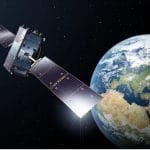As more wars are fought in cities, new technology can help and hurt
By Perry World House | December 21, 2016
When the most important battle in the campaign to dislodge ISIS from Iraq and Syria—the offensive to retake Iraq’s second-largest city, Mosul—began on October 17th, the UN Refugee Agency warned of an impending humanitarian catastrophe. International aid agencies fear that urban warfare in a densely populated city inevitably puts large numbers of civilians in grave danger from crossfire, snipers, and artillery barrages. The United Nations has estimated that as many as one million Iraqis may flee their homes as the fighting continues to unfold, resulting in one of the largest displacement crises in recent years. Over 70,000 people have fled Mosul and surrounding areas thus far, with temperatures dropping below freezing. Incidents of ISIS using crude chemical weapons that can be especially dangerous in close city quarters, and recent reports about thousands of men, women, and children being used as human shields to reinforce ISIS positions, suggest that the human toll could be staggering.
The offensive to liberate Mosul, and even more recently the battle for Aleppo in Syria, illustrate the complex challenges and ruinous effects of military operations that occur in cities. Unfortunately, as the world continues to urbanize, this kind of combat will become increasingly hard to avoid. How should science and policy experts respond to the trend towards urban conflict? And what role might emerging technologies play in decreasing the human suffering involved?
More than half the world’s population now lives in cities. In 1950, there was only one city with more than 10 million inhabitants—New York. Today, there are 28 so-called megacities, with Tokyo, Delhi, Shanghai, Mexico City, Mumbai, and Sao Paulo being the largest. Over the next three decades, the cities of the developing world, especially in Asia and Africa, will account for nearly 90 percent of the projected 2.5 billion-person increase in the world’s urban population. This unprecedented and largely unplanned urban growth is occurring in some of the poorest and youngest states, many of them majority-Muslim, where the rule of law is weak, public health and education services are inadequate, and employment opportunities are scarce. The combination of high population density, urban poverty, dwindling resources and poor governance make megacities like Cairo, Lagos, Karachi, Dhaka, and Kinshasa particularly vulnerable to natural disasters, terrorism, criminal activity, and political and social unrest.
When war comes to cities, the consequences can be devastating. Today, 50 million people live in war-ravaged cities like Damascus, Homs, and Aleppo in Syria; Falluja, Ramadi, and Mosul in Iraq; Sanaa and Aden in Yemen; and Donetsk and Luhansk in Ukraine. Despite the common image of desperate and displaced people living in makeshift camps, more than half of all refugees around the world live in cities. Massive displacement of populations, extensive damage to critical infrastructure, and the presence of explosive remnants of war hinder sustainable urban development. Worse still, the wartime destruction of cities can reverse a country’s development by decades. According to the International Committee of the Red Cross, the conflict in Syria, for example, has already set the country’s development back by at least 30 years.
Throughout history, militaries have tried to avoid cities. Fighting for and in cities is destructive, slow, and often inconclusive. The physical terrain of cities–multistory buildings, walls, underground transportation tunnels, and other structures and obstructions—create significant obstacles to maneuvering forces, using firepower, and gathering intelligence, and can hinder communications. The local population, willingly or not, can offer cover and concealment to enemy forces, making it more difficult to differentiate between combatants and non-combatants, and to successfully target hostile actors without harming innocent civilians. Militaries need large numbers of ground troops to attack, clear, and hold cities. And since fighting often devolves into a long and merciless battle of attrition, military operations in cities tend to result in enormous costs in terms of both resources and human casualties.
In short, urban combat, as at least one observer has called it, is “combat in hell.” However, trends in global politics, combined with global urbanization, mean the future is likely to feature more, not less, fighting in cities.
Eyes in the sky. Emerging technologies may offer potential opportunities to reduce the tremendous human suffering that is inflicted on the civilian population during urban fighting, while simultaneously making urban warfare harder to avoid and contain. Positive developments include continuing advancements in the accuracy of weapons, which can reduce the risk of civilian deaths and limit destruction of critical infrastructure. For more than five years now, the Syrian government, for instance, has repeatedly engaged in indiscriminate bombardment of civilian areas using heavy artillery, aerial bombs, and air-to-surface missiles leading to the destruction of entire urban centers in Homs, Aleppo, and the Damascus suburbs. One reason the damage to Aleppo has arguably been so appalling is that Assad’s regime, even if it were interested in complying with international law and protecting civilians, lacks the technological capacity to employ smart weapons the way a country like the United States might.
Yet as Matthew Waxman, now a professor of international law at Columbia University, stressed in a RAND Corporation report, “weapon precision is, at best, only as good as the information that supports it.” International law requires military planners and commanders to distinguish between military and civilian targets, and to restrict their attacks only to military objectives. But identifying military targets in urban environments where insurgents, terrorists, or conventional army units are often intermingled with civilians or friendly troops is inherently difficult. This challenge highlights the need for advanced intelligence, surveillance, and reconnaissance systems that can provide detailed, accurate information about a city’s terrain, society, and supporting infrastructure.
Remotely controlled unmanned aerial surveillance and attack systems are increasingly being used to provide just that kind of information. Deployed in conjunction with more traditional weapons, they are shifting how war in cities occurs. In Iraq in 2008, for example, the United States used both ground forces and unmanned aerial vehicles—commonly known as drones, including the Predator and the Shadow—in the high-tech, complex, integrated effort to hunt and destroy the Jaysh al-Mahdi militia in Sadr City. In 2008 and 2014, the Israeli Defense Forces relied on unmanned systems for intelligence on the positions and activities of Hamas militants to better integrate air strikes and ground operations in Gaza. Drones like the Reaper and the Predator are also at the forefront of intelligence, surveillance, and reconnaissance missions flown by the United States in its air war against ISIS.
The deployment of high-tech intelligence and surveillance tools is meant to help decision-makers minimize the chances that military attacks will cause disproportionate civilian damage. But even in situations where the protection of civilians is a priority, it is not clear that these technologies can guarantee a more judicious use of heavy artillery and air power. The Turkish military’s use of artillery in its operations against the separatist PKK in the country’s southeast, for instance, has led to high civilian casualties, even though it used drones to assist with these urban operations. And in Ramadi, Iraq, in December 2015, intensive, highly precise Coalition airstrikes cleared the way for Iraqi forces to retake the city—and still nearly 80 percent of buildings were either partly or completely destroyed in the subsequent fighting.
Viral warfare. In a world made smaller by global interconnectedness, urban warfare may also become more difficult to avoid and contain. Traditional military doctrine on urban operations calls for isolating cities before an assault, and doing so can help stop a battle from geographically spreading. Achieving physical isolation–essentially, besieging and then storming the city as the Russians did with Grozny in 1999 and the Americans did with Fallujah in 2004–is extremely difficult and destructive, and may in fact not be possible in large, densely populated areas. But achieving virtual isolation seems even more improbable these days. While conflicts in faraway cities have captured global attention in the past, the proliferation of cell phone technology and our unprecedented, Internet-enabled interconnectedness are changing the picture in important ways. In particular, social media platforms—like Facebook, Twitter, YouTube, Snapchat, and Instagram—are altering how individuals, states, and especially armed groups organize, recruit, mobilize, network, and communicate.
As counterinsurgency expert David Kilcullen argues, in crowded, highly networked cities, armed groups can leverage social media and mobile technology for tactical advantage. This has direct implications for the scale and intensity of wars in cities. During the 2008 Mumbai attacks, for example, members of the Pakistani terrorist group Lashkar-e-Taiba used Skype, cell phones, and satellite phones to communicate with their commanders in Pakistan, who in turn kept track of Twitter and cable news to update the assault team on the ground in real time. This allowed the attackers to evade Indian police and counterterrorism units, and to besiege one of the world’s largest cities with attacks on civilians and public places for almost three days.
Social media also now plays a crucial role in recruitment, making a tangible difference on the physical battlefield. It helped ISIS draw at least 30,000 foreign fighters from nearly 100 countries to the urban battlefields of Iraq and Syria, showing how impossible it may now be to keep any war contained. The inherent difficulties of isolating modern cities mean that urban conflicts are likely to last longer, grow more destructive, and potentially spread to previously stable areas.
Fighting in cities almost always results in devastating consequences for people’s health, livelihoods, education, and dignity. With requisite political will, technology can help alleviate some of that pain, minimizing civilian casualties and collateral damage. Enhancing methods of intelligence gathering and analysis, and improving surveillance technology, could help military planners better distinguish between enemy combatants and civilians, while increasingly precise munitions could help protect civilians on the ground. High on military wish-lists, for instance, are low-cost, covert, and maneuverable micro- (bird size) and nano- (insect size) drones for reconnaissance and surveillance. So is wearable sensor technology for close combat situations, which can provide accurate location and navigation data and allow for uninterrupted communications between troops and unmanned aerial vehicles in areas where GPS signals are weak or absent. But the sheer density of people, buildings, and infrastructure in cities means that such technological improvements, even when combined with strict directives to protect civilians, may not be sufficient to prevent large-scale destruction.
The problem, as always, is that technology does not fight war on its own—people fight war with technology. There are three types of actors who will use emerging technologies in city warfare, and each will likely do so differently. First, industrialized democracies like the United States will probably continue leveraging technological advancements in surveillance and accuracy to reduce the effect of war on cities. More precise targeting with better intelligence could help reduce destruction, making it easier to rebuild a city after a war ends. Second, violent non-state actors such as ISIS and Hezbollah are likely to use emerging technologies in cities to create novel weapons, such as grenades launched from modified commercial drones, and to broadcast their attacks to a global audience. Finally, nation-states whose cities will be the battlegrounds of future wars, like Syria, will continuously learn new ways to leverage technology, and not just weapons. The way the Syrian government has strategically manipulated Internet access in the besieged city of Aleppo throughout the civil war highlights that it is not just military technology, but civilian technology, that will shape urban warfare in the 21st century.
This article is by Margarita Konaev, a post-doctoral fellow at the University of Pennsylvania’s Perry World House. Her research focuses on the security implications of global and subnational demographic trends. She holds a PhD in political science from the University of Notre Dame (2016), a master of arts in conflict resolution from Georgetown University (2010), and a bachelor of arts from Brandeis University (2007). You can follow her on Twitter @ritakonaev.
Together, we make the world safer.
The Bulletin elevates expert voices above the noise. But as an independent nonprofit organization, our operations depend on the support of readers like you. Help us continue to deliver quality journalism that holds leaders accountable. Your support of our work at any level is important. In return, we promise our coverage will be understandable, influential, vigilant, solution-oriented, and fair-minded. Together we can make a difference.
Topics: Columnists, Technology and Security














